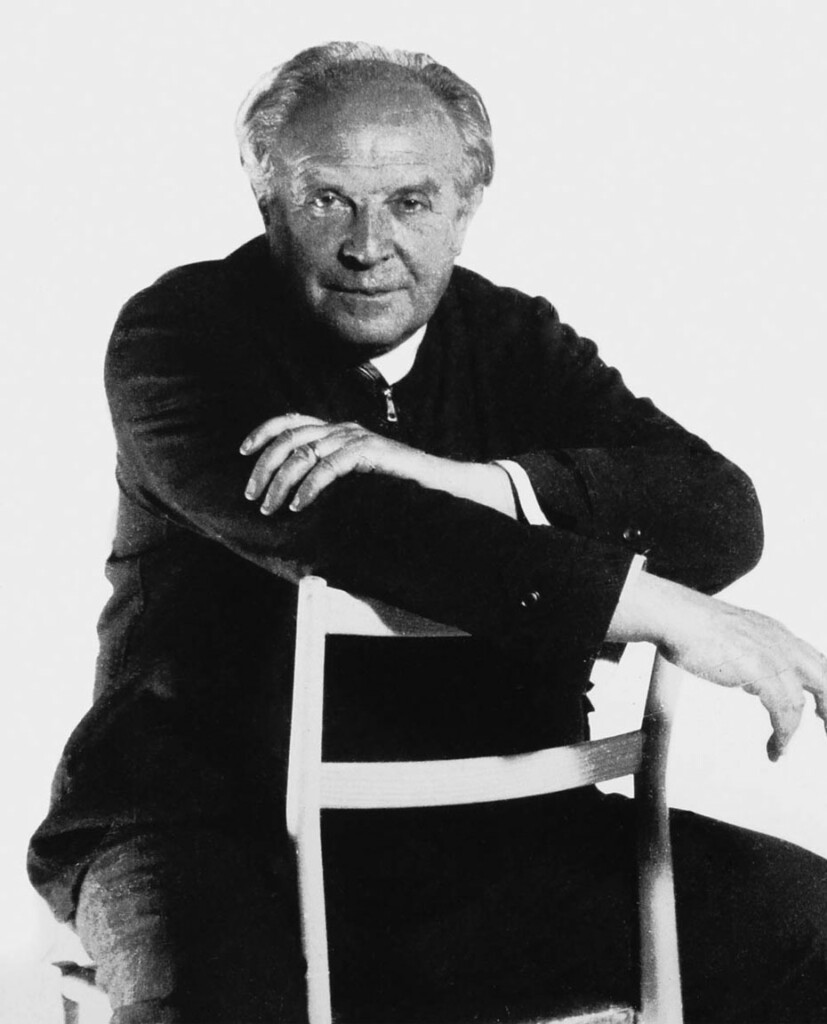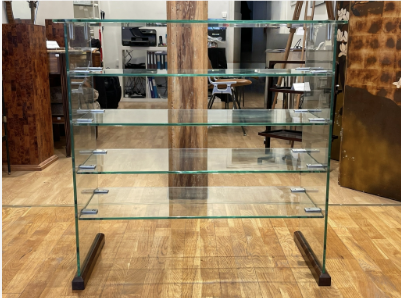 Gio Ponti est diplômé de l’Ecole Polytechnique de Milan, et ouvre en 1921 son cabinet d’architecture. Il est nommé directeur artistique de la manufacture de porcelaine Richard-Ginori en 1923, il applique le mode de production en série à l’ensemble des créations de l’entreprise. Ses pièces d’inspiration néoclassique sont primés et notamment son vase « la conversation classique » avec lequel il remporte un grand prix à l’Exposition internationale des Arts Décoratifs de Paris en 1925.
Gio Ponti est diplômé de l’Ecole Polytechnique de Milan, et ouvre en 1921 son cabinet d’architecture. Il est nommé directeur artistique de la manufacture de porcelaine Richard-Ginori en 1923, il applique le mode de production en série à l’ensemble des créations de l’entreprise. Ses pièces d’inspiration néoclassique sont primés et notamment son vase « la conversation classique » avec lequel il remporte un grand prix à l’Exposition internationale des Arts Décoratifs de Paris en 1925.
C’est lors de cet évènement qu’il se lie d’amitié avec Tony Bouilhet le directeur artistique de la marque d’orfèvrerie française Christofle, pour qui il réalisera à sa demande la villa, l’Ange Volant, à Garches. Qui restera sa seule architecture en France.
Il collabore également avec les marques Christofle à Paris et Venini à Murano
Il crée en parallèle des séries de meubles Art Deco à des prix accessible , La Rinascente, pour les grands magasins italiens un choix de par ses rapports avec le mouvement Labirinto, lien entre créateurs et fabricants. S’ajoute à cela sa revu Domus fondée en 1928 mettant en avant les jeunes talents du design et de l’architecture et transmettre ses idées
Dans les années 1930, il prend le chemin du moderniste en architecture avec la construction, à Milan, des Case Tipiche et des bureaux de la société Montecatini. Ce qui ne le retiens pas de dessiner des luminaires pour Fontana Arte, des couverts pour Krupp, des étoffes pour De Angeli-Frua et Ferrari, du mobilier pour Casa e Giardino, etc.
La décennie suivante, il se consacre au Palazzo del Bo de l’université de Padoue : allant jusqu’à peigner certaines des fresques monumentales, imaginer des contremarches d’escaliers aux marbres différents. En parallèle, il continue de ce dédier à la peinture, l’écriture, le cinéma et l’Opéra, pour lequel il imaginera les costumes pour la Scala de Milan.
Après la guerre, pour promouvoir le « made in Italy, »soit encourager la création italienne à l’international. Pour cela il le diffuse dans Domus et organise des expositions grâce auxquelles deux grandes œuvres notables sont alors créées, la machine à café aérodynamique La Cornuta (1949) pour Pavoni et la chaise Leggera (1951) pour Cassina.
De 1950 à 1960, Gio Ponti est surtout connu pour son architecture qu’il déploya à travers le monde (Vénézuela, Hong- kong, Etats-Unis…) mais particulièrement avec la tour Pirelli ou encore la villa Planchart à Caracas. De plus, Il dessine de multiples objets et mobiliers dont le tableau lumineux pour Lumi et le fauteuil Distex pour Cassina (réédité depuis 2012 par Molteni&C).
Gio Ponti graduated from the Polytechnic of Milan, and opened his architectural practice in 1921. He was appointed artistic director of the porcelain factory Richard-Ginori in 1923, he applies the mode of mass production to all the creations of the company. His works of neoclassical inspiration are awarded and in particular his vase «la conversation classique» with which he won a grand prize at the International Exhibition of Decorative Arts in Paris in 1925.
It was during this event that he befriended Tony Bouilhet the artistic director of the French goldsmith brand Christofle, for whom he will realize, at his request, the villa l’Ange Volant, in Garches which will remain his only architecture in France.
He also collaborates with the brands Christofle in Paris and Venini in Murano
He created in parallel series of Art Deco furniture at affordable prices, La Rinascente, for Italian department stores, an obvious choice by its relationship with the Labirinto movement, link between creators and manufacturers. In addition, his magazine Domus, founded in 1928, highlights the young talents of design and architecture in order to convey his ideas.
In the 1930s, he took the path of the modernist in architecture with the construction, in Milan, of the Case Tipiche and the offices of the company Montecatini. This did not prevent him from designing lighting for Fontana Arte, cutlery for Krupp, fabrics for De Angeli-Frua and Ferrari, furniture for Casa e Giardino, etc.
The following decade, he dedicated himself to the Palazzo del Bo of the University of Padua: going as far as painting some of the monumental frescoes, imagining stair risers with different marbles. In parallel, he continues to dedicate himself to painting, writing, cinema and the Opera, for which he will imagine the costumes for the Scala in Milan.
After the war, he promoted «made in Italy,» to encourage Italian creation internationally. For this he disseminated it in Domus and organized exhibitions thanks to which two great notable works were then created, the aerodynamic coffee machine La Cornuta (1949) for Pavoni and the Leggera chair (1951) for Cassina.
From 1950 to 1960, Gio Ponti was best known for his architecture which he deployed around the world (Venezuela, Hong Kong, United States, etc.) and particularly with the Pirelli Tower or the Planchart Villa in Caracas. In addition, he draws multiple objects and furniture including the luminous table for Lumi and the armchair Distex for Cassina (reissued since 2012 by Molteni&C).
Pour accéder aux œuvres de ce créateur que nous exposons, cliquez sur les images ci-dessous/ To access the works of this creator that we exhibit, click on the images below :
